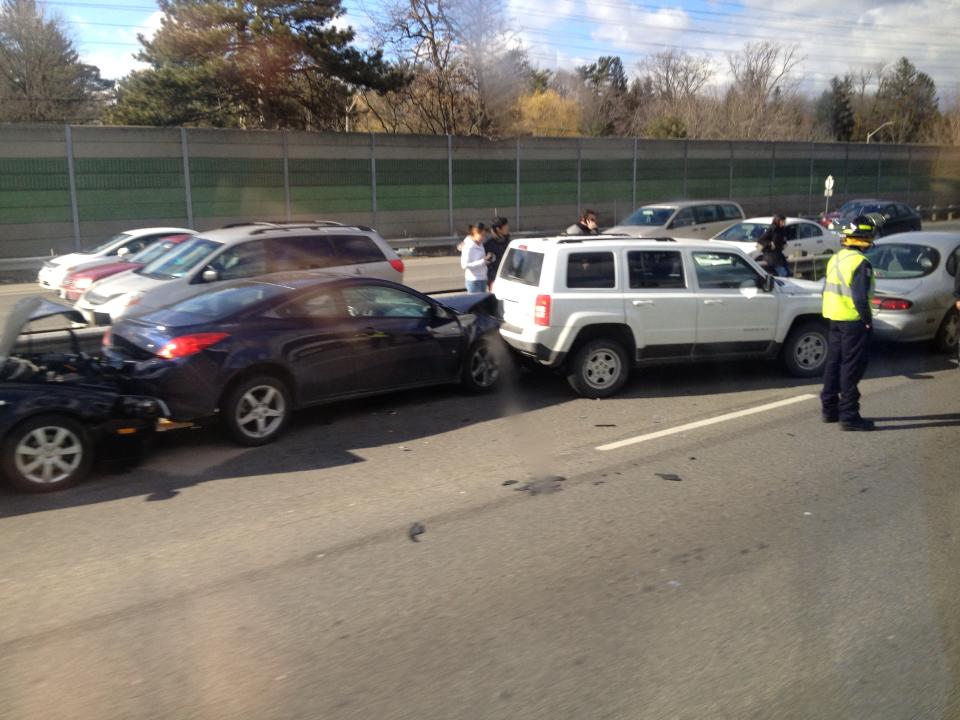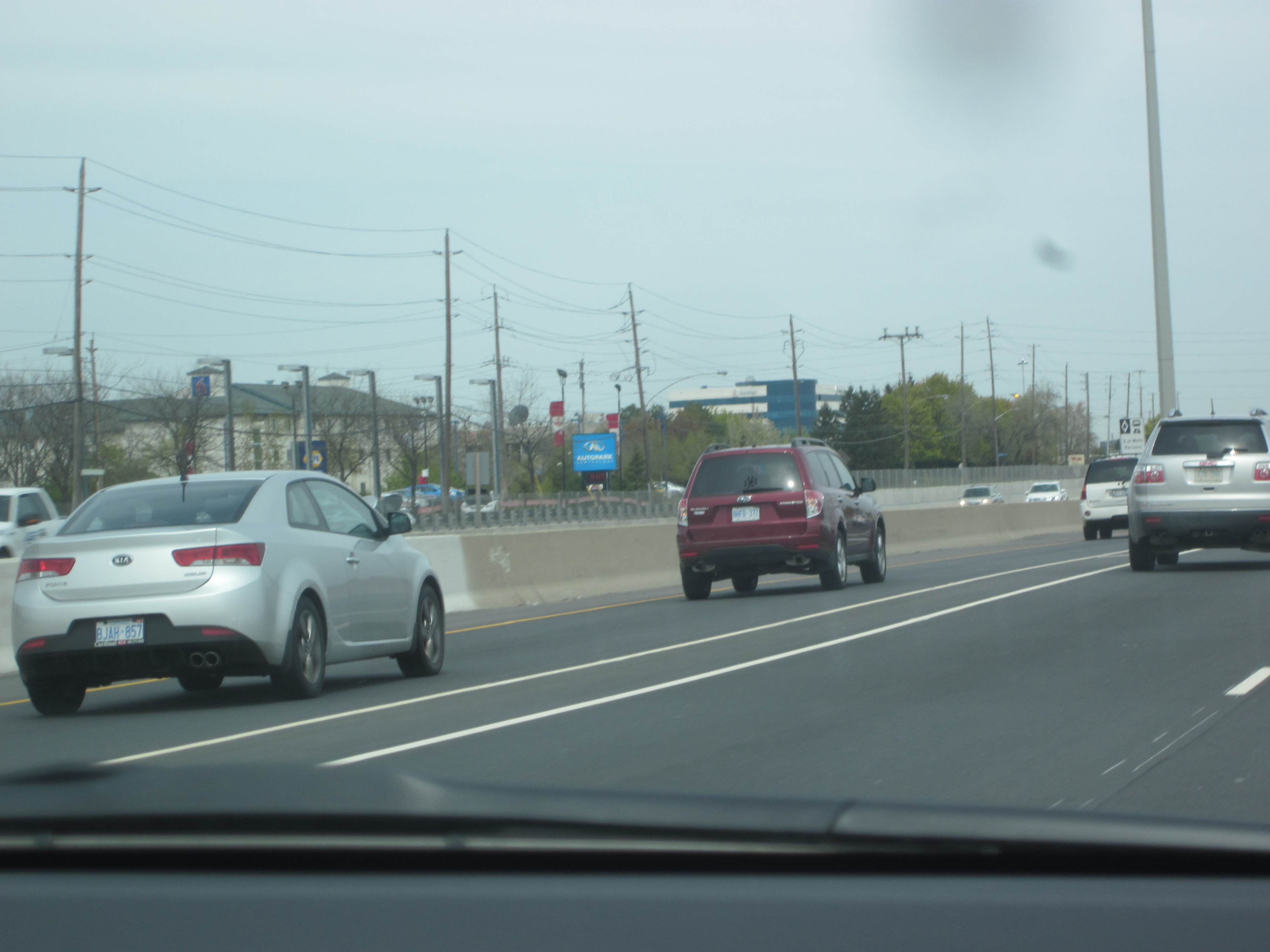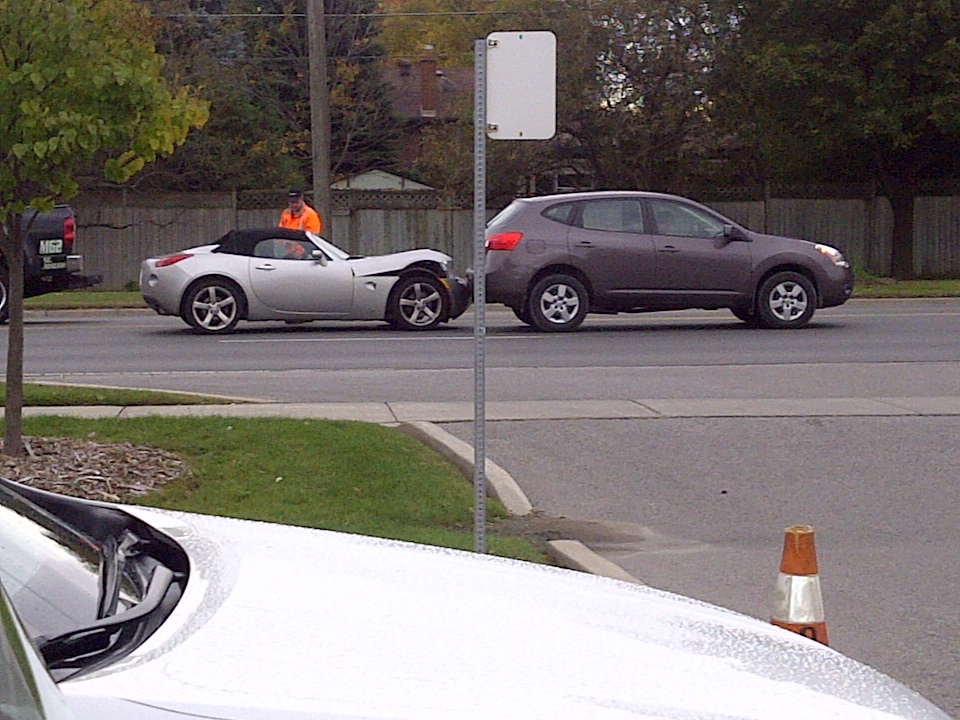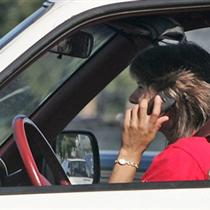It’s not the road that causes the crash
 Raising four kids has taught me a lot. One of those things it taught me is to get my facts straight before I lay blame. It also taught me to do that with other things in life as opposed to jumping to conclusions. Driving is one of those things. Many times I’ve heard how people would blame roads for the cause of crashes. How is that possible? The road doesn’t do anything. It just sits there. Wouldn’t it be more of the actions of the driver that would cause the crash?
Raising four kids has taught me a lot. One of those things it taught me is to get my facts straight before I lay blame. It also taught me to do that with other things in life as opposed to jumping to conclusions. Driving is one of those things. Many times I’ve heard how people would blame roads for the cause of crashes. How is that possible? The road doesn’t do anything. It just sits there. Wouldn’t it be more of the actions of the driver that would cause the crash?
Granted, having certain safety aspects would help protect drivers from interfering with other drivers in case of loss of control, but that would be after the initial loss of control. Anywhere from 85% to 90% of vehicle crashes are caused by driver error, depending upon your jurisdictions. So why are authorities blaming the roads? The remaining 10% to 15% of crashes can be associated to mechanical failure or unforeseen road or weather conditions.
We all know rain, snow and ice are slippery and can affect the control of the vehicle, but it’s the driver’s actions which causes the vehicle to lose traction. Having poor tires on the vehicle is the decision of the driver. Drivers tend to drive too fast and over estimating their abilities to handle their vehicle during these conditions. Late braking, taking chances while turning, distracted driving and following too closely are just some of the common driving errors which cause serious collisions across most jurisdictions every day. If conditions are that bad, ask yourself why drive?
Three of the most common crashes are loss of control, rear crashes and intersection crashes. These can all be prevented with just one change – the driver’s actions. We’re so quick to blame someone else or something else for the crash. It’s like putting your hand in a fire to pull out a burning log then blaming the log for the burn on your hand. No one really wants to say “yeah, I screwed up” after a crash, but it’s really true.
 Every day – and I do mean every day – as I drive I witness countless numbers of drivers following too closely, braking late, cutting off other drivers while turning, speeding and not paying attention while driving. These can all be corrected if drivers made a slight change in their driving attitude and their skillset. Following distance is not measured by car lengths. It’s measured by seconds behind the vehicle ahead. A proper following distance gives you time to see brake lights ahead, time to get your foot to the brake pedal and time to stop. This explains more here Following Distance
Every day – and I do mean every day – as I drive I witness countless numbers of drivers following too closely, braking late, cutting off other drivers while turning, speeding and not paying attention while driving. These can all be corrected if drivers made a slight change in their driving attitude and their skillset. Following distance is not measured by car lengths. It’s measured by seconds behind the vehicle ahead. A proper following distance gives you time to see brake lights ahead, time to get your foot to the brake pedal and time to stop. This explains more here Following Distance
 Drivers need to judge the speed of oncoming vehicles before turning across their path. Forcing another driver to brake for your actions is unacceptable. That’s a lot of trust in someone else isn’t it? Patience is important and not taking chances because you’re late reaching your destination. Giving you the advantage of knowing if someone else is cutting across your path can be explained here Wheel Direction
Drivers need to judge the speed of oncoming vehicles before turning across their path. Forcing another driver to brake for your actions is unacceptable. That’s a lot of trust in someone else isn’t it? Patience is important and not taking chances because you’re late reaching your destination. Giving you the advantage of knowing if someone else is cutting across your path can be explained here Wheel Direction
 Rear crashes can be avoided, but you have to be ready for it. As the driver sitting stopped in traffic, you need to be ready to move out of the way. Using an empty lane, sidewalk or front lawn may be the escape you need. Monitoring your mirrors keeps you up-to-date as whether you need to move out of the way of potential danger from behind. This explains a lot more here Avoiding Rear Crashes
Rear crashes can be avoided, but you have to be ready for it. As the driver sitting stopped in traffic, you need to be ready to move out of the way. Using an empty lane, sidewalk or front lawn may be the escape you need. Monitoring your mirrors keeps you up-to-date as whether you need to move out of the way of potential danger from behind. This explains a lot more here Avoiding Rear Crashes
If you’re the driver approaching stopped traffic, acknowledge the road conditions and brake early. This gives you extra time to stop in case the road conditions reduce your traction. This explains more here Brake Early
 What can I say about distracted driving that hasn’t already been said? Driving is your job when you’re behind the wheel. Staying focused allows you to protect yourself, your passengers and other road users you may come across. Has distracted driving become so common that many feel “it won’t happen to them”? Or do these drivers really feel they can handle it, despite what the professionals have recommended? This explains more here Distracted Driving
What can I say about distracted driving that hasn’t already been said? Driving is your job when you’re behind the wheel. Staying focused allows you to protect yourself, your passengers and other road users you may come across. Has distracted driving become so common that many feel “it won’t happen to them”? Or do these drivers really feel they can handle it, despite what the professionals have recommended? This explains more here Distracted Driving
So if the road causes crashes, think about this. If millions of drivers travel these roads each and every year, how come more crashes aren’t happening? If it was indeed the road, there would be hundreds of thousands of crashes – but there aren’t. The crashes are human related, which means they can stop. It’s really up to you.
**For more driving topics, use the search function at the side of this page.
*Have a quick listen to this short “Speed Bumps” podcast as it talks if you’re really a good driver.

That’s why the term accident is a misnomer. “Accident” assumes that the collision was just a happenstance that occurred out of the blue and was unforeseen and unaffected by human interaction. I have seen too many unfortunate incidents caused by arrogance, ignorance, apathy, indecision, naivete, inexperience, inability, or various combinations of all of these. People need to become more engaged in driving instead of being steering wheel holders that simply react to circumstances without awareness of what is going on around them.